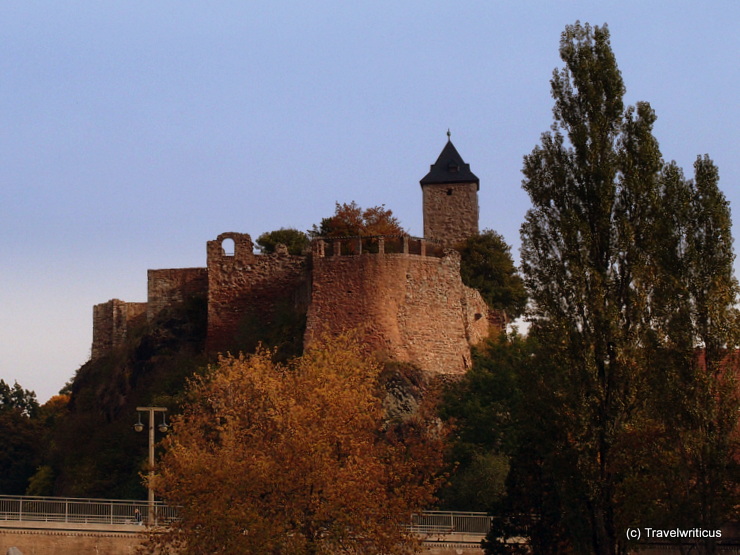
Giebichenstein Castle (Burg Giebichenstein) is a member of the Romanesque Road (Straße der Romanik). It served as a royal residence of Otto I for many years. Today, parts of the castle house a campus of the Kunsthochschule Halle.
You only see what you know (Goethe)

Giebichenstein Castle (Burg Giebichenstein) is a member of the Romanesque Road (Straße der Romanik). It served as a royal residence of Otto I for many years. Today, parts of the castle house a campus of the Kunsthochschule Halle.
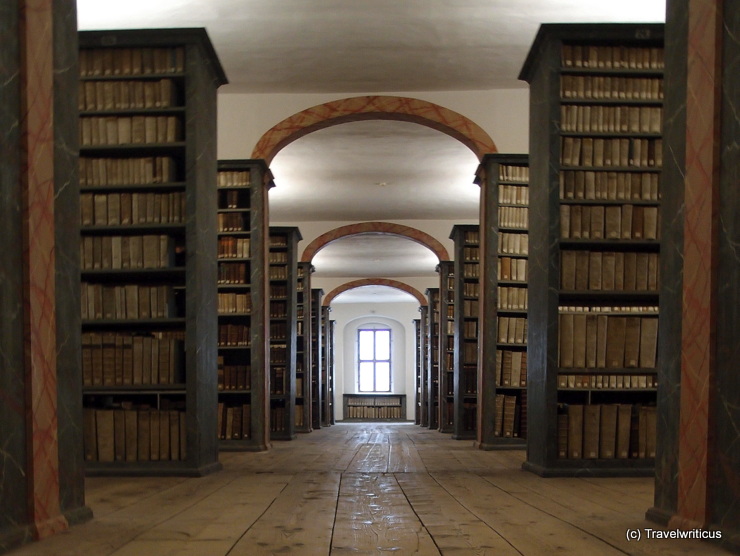
It was in Halle when I first heard the term Kulissenbibliothek. After I visited the Library Hall of the Francke Foundations, I understood the meaning of this word. The position of the bookshelves reminded me of the sceneries (Kulissen) in a theatre. [German]
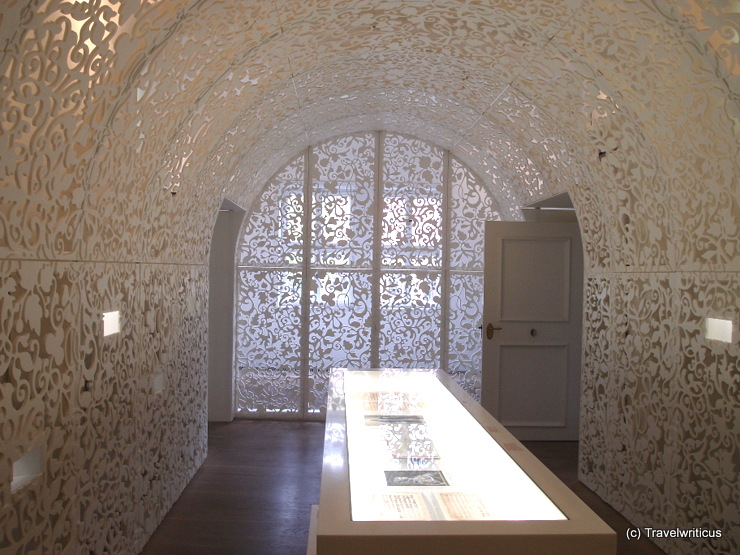
Georg Frideric Handel (Georg Friedrich Händel) was born in Halle (Saale) in 1685 and lived in this city for 18 years. Today, his birthplace houses an exhibition on the life and work of the composer. It is generally known as the Handel House (Händel-Haus). [German]
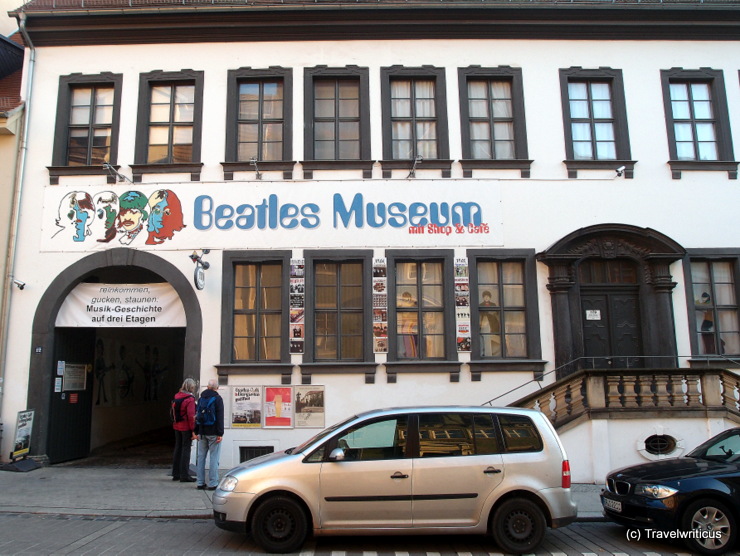
The Beatles Museum in Halle (Saale) tells about the famous band on three floors. It shows pieces from the beginning in the 1960s until their separation in 1970. It also displays material about their solo careers after 1970.
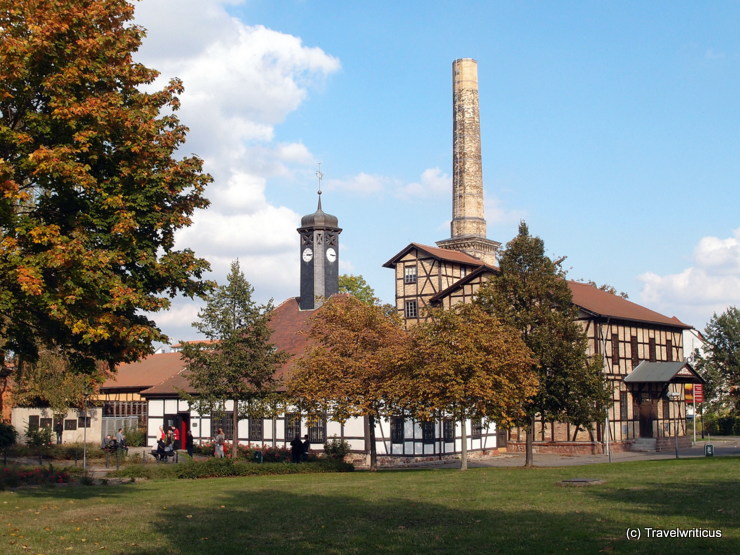
The Hallors and Saline Museum opened in the former Royal Prussian saline to Halle (Saale) in 1967. Members of a brotherhood of salt producers – the Hallors – still present traditional salt production in its rooms at regular events. [German]
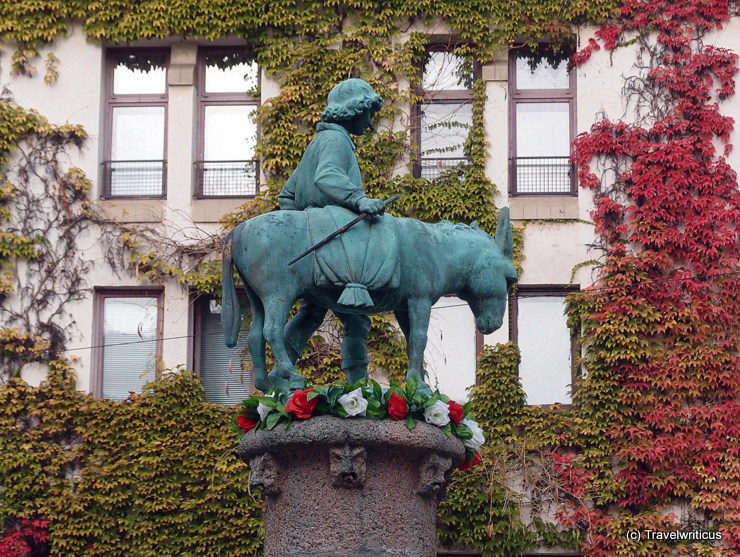
The Donkey Fountain (Eselsbrunnen) on the Old Market (Alter Markt) in Halle (Saale) dates back to 1913. Its motiv – a man with a donkey walks over a rug of roses – refers to an old but fun legend. [German]
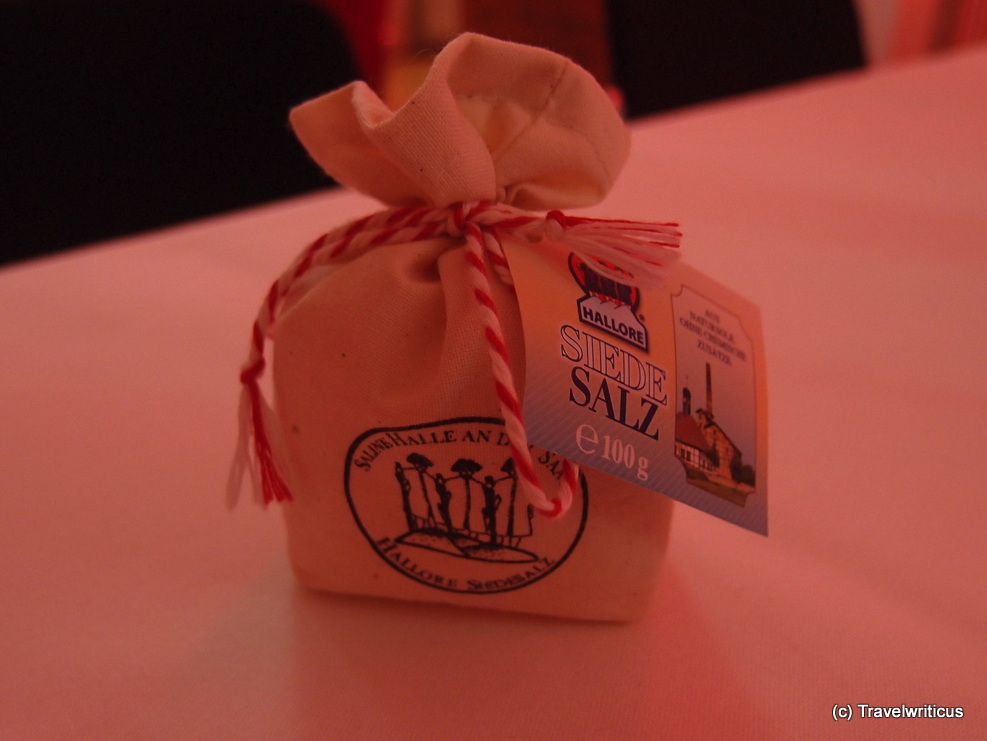
Halle’s early history relates to the harvesting of salt. The names of the city Halle and the river Saale originate from old expressions related to salt. An appropriate souvenir from Halle (Saale) could be a portion of salt produced with technologies of the 19th century in the Hallors and Saline Museum (Halloren- und Salinenmuseum).
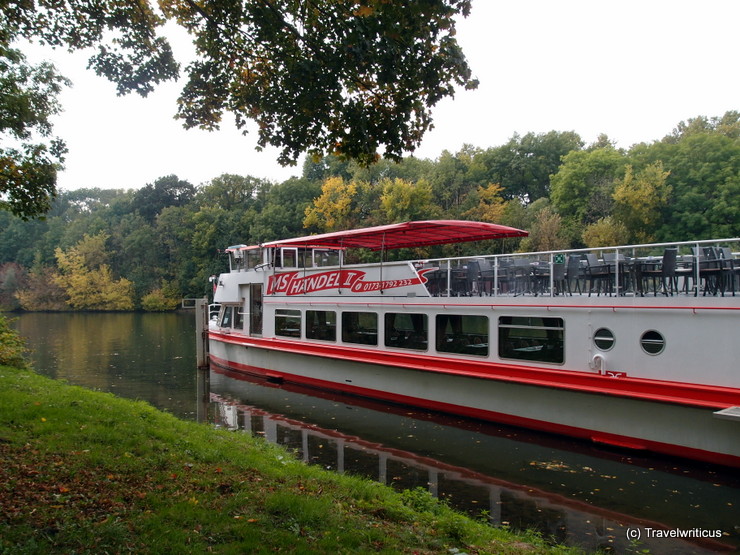
With the MS Händel II, a ship named after composer Georg Frederik Handel (Georg Friedrich Händel), one can take relaxing tours on the river Saale around Halle. A highlight of these trips is passing Giebichenstein Castle. If you are interested in the composer’s works, the Handel House is worth a visit.
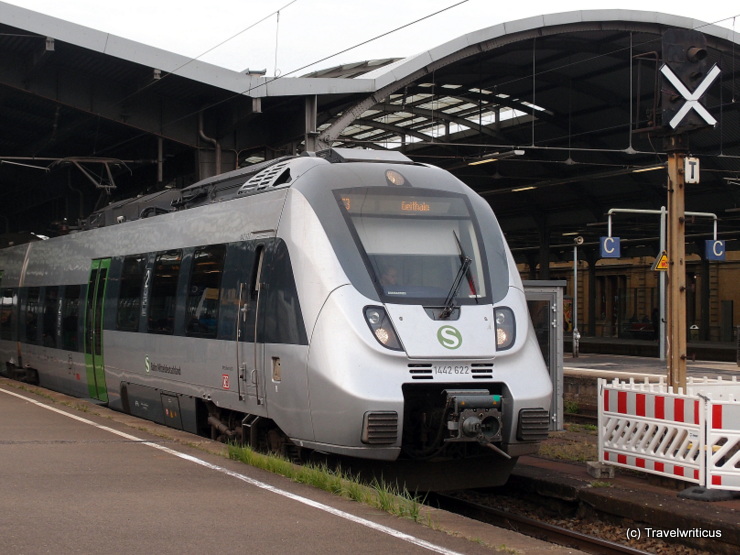
The Talent 2 is a multiple-unit railcar manufactured by Bombardier Transportation. The first trains were produced in 2008. The design of the cab ends made Germans call this type of train Hamsterbacke (hamster cheek). The depicted train is run by the S-Bahn Mitteldeutschland.
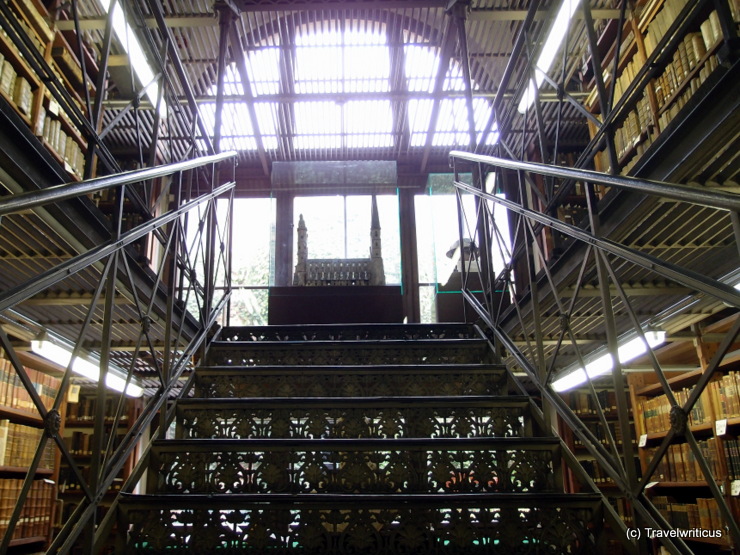
The Marienbibliothek, a library named after the nearby church Marienkirche was founded by Sebastian Boetius in 1552. In the beginning, the books were stored in a tower of the Marienkirche. Today the library is housed in a typical magazine of the late 19th century with iron stairs and iron-cast pillars.
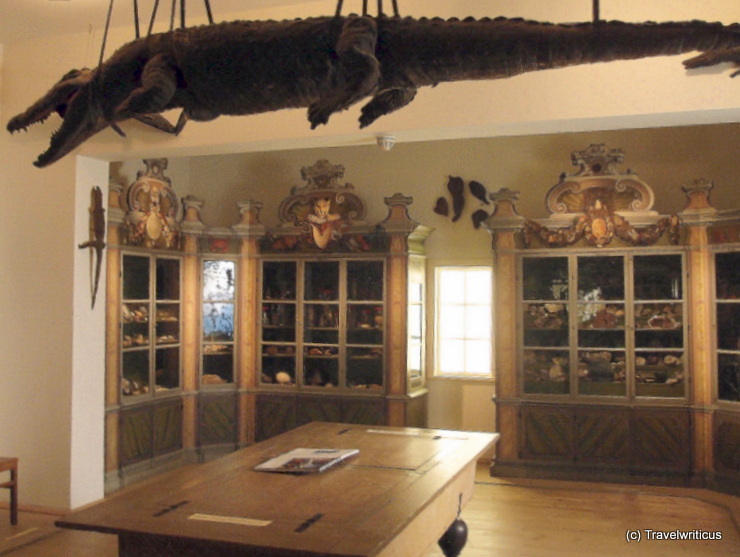
The Cabinet of Artefacts and Natural Curiosities (Kunst- und Naturalienkammer) was established by August Hermann Francke in 1698. Today this collection is regarded as the only wholly preserved cabinet of curiosities dating from the Baroque age. [German]
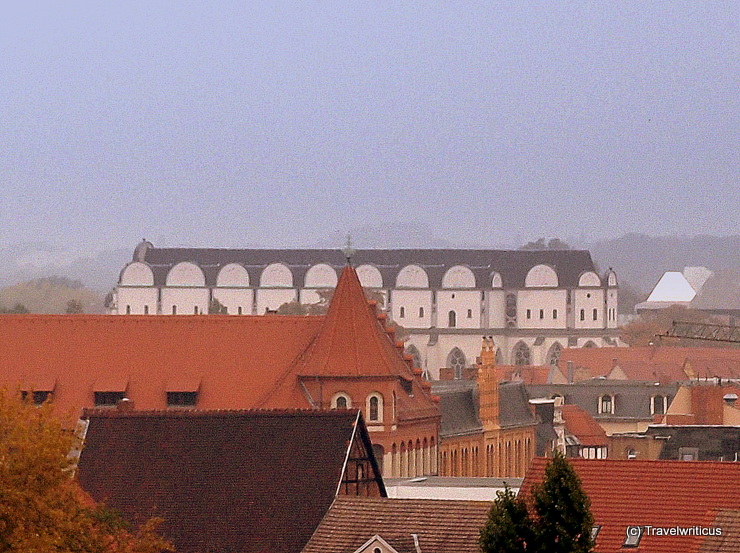
In the beginning, the later cathedral of Halle was a church built by the Dominican. Traditionally churches of a mendicant order don’t have a tower. The lovely gables were added by Cardinal Albert of Brandenburg. Today it is just a church again but people of Halle still call the edifice a Dom (cathedral).